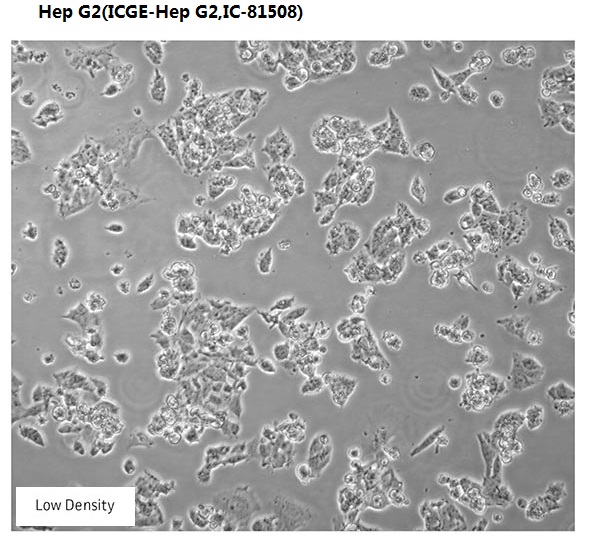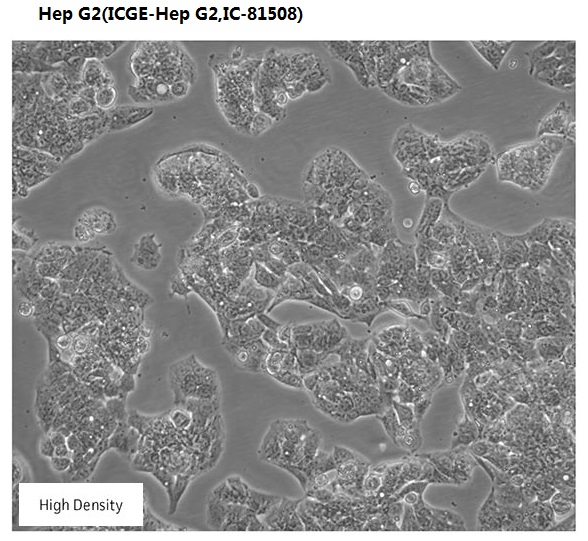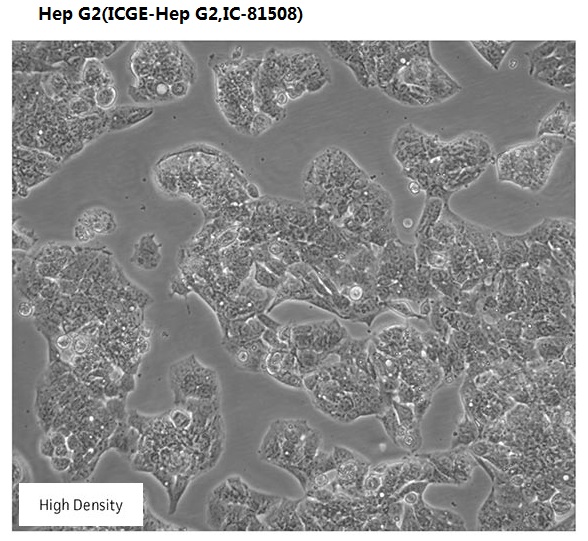


Overview
| Organism | Homo sapiens, human |
|---|---|
| Tissue | liver |
| Product Format | frozen |
| Morphology | epithelial |
| Culture Properties | adherent |
| Biosafety Level |
1
Biosafety classification is based on U.S. Public Health Service Guidelines, it is the responsibility of the customer to ensure that their facilities comply with biosafety regulations for their own country. |
| Disease | hepatocellular carcinoma |
| Age | 15 years adolescent |
| Gender | male |
| Ethnicity | Caucasian |
| Applications |
These cells are suitable as a transfection host
|
| Storage Conditions | liquid nitrogen vapor phase |
| Disclosure | This material is cited in a US or other Patent and may not be used to infringe the claims. Depending on the wishes of the Depositor, ATCC may be required to inform the Patent Depositor of the party to which the material was furnished. This material may not have been produced or characterized by ATCC. |
Properties
| Karyotype | modal number = 55 (range = 50 to 60); has a rearranged chromosome 1 (Knowles BB, Aden DP. Human hepatoma derived cell line, process for preparation thereof, and uses therefor. US Patent 4,393,133 dated Jul 12 1983) |
|---|---|
|
|
|
| Derivation | HepG2 was derived from a liver hepatocellular carcinoma of a 15 year old Caucasian male. |
| Clinical Data |
15 years Caucasian male |
| Receptor Expression | insulin; insulin-like growth factor II (IGF II) Ref |
| Genes Expressed |
alpha-fetoprotein (alpha fetoprotein); albumin; alpha2 macroglobulin (alpha-2-macroglobulin); alpha1 antitrypsin (alpha-1-antitrypsin); transferrin; alpha1 antichymotrypsin; (alpha-1-antichymotrypsin); haptoglobin; ceruloplasmin; plasminogen;,complement (C4); C3 activator; fibrinogen; alpha1 acid glycoprotein (alpha-1 acid glycoprotein); alpha2 HS glycoprotein (alpha-2-HS-glycoprotein); beta lipoprotein (beta-lipoprotein); retinol binding protein (retinol-binding protein)
|
| Cellular Products |
Cellular products: alpha-fetoprotein (alpha fetoprotein); albumin; alpha2 macroglobulin (alpha-2-macroglobulin); alpha1 antitrypsin (alpha-1-antitrypsin); transferrin; alpha1 antichymotrypsin; (alpha-1-antichymotrypsin); haptoglobin; ceruloplasmin; plasminogen;
complement (C4); C3 activator; fibrinogen; alpha1 acid glycoprotein (alpha-1 acid glycoprotein); alpha2 HS glycoprotein (alpha-2-HS-glycoprotein); beta lipoprotein (beta-lipoprotein); retinol binding protein (retinol-binding protein)
|
| Tumorigenic | No |
| Effects |
No, in immunosuppressed mice
Yes, in semisolid medium
|
| Comments |
The cells express 3-hydroxy-3-methylglutaryl-CoA reductase and hepatic triglyceride lipase activities.
The cells demonstrate decreased expression of apoA-I mRNA and increased expression of catalase mRNA in response to gramoxone (oxidative stress).
There is no evidence of a Hepatitis B virus genome in this cell line. In addition to the hepatocellular carcinoma or hepatoma cell line based on the original publication (PubMed: 6248960), HepG2 is also referred as hepatoblastoma cell line (PubMed:19751877). |
Background
| Complete Growth Medium |
The base medium for this cell line is ATCC-formulated Eagle''''''''s Minimum Essential Medium, Catalog No. 30-2003. To make the complete growth medium, add the following components to the base medium: fetal bovine serum to a final concentration of 10%. |
|---|---|
| Subculturing |
Volumes are given for a 75 cm2 flask. Corning® T-75 flasks (catalog #430641) are recommended for subculturing this product. Increase or decrease the amount of dissociation medium needed proportionally for culture vessels of other sizes.
Subcultivation Ratio: A subcultivation ratio of 1:4 to 1:6 is recommended
Medium Renewal: Twice per week
|
| Cryopreservation |
Freeze medium: Complete growth medium supplemented with 5% (v/v) DMSO
Storage temperature: liquid nitrogen vapor phase
|
| Culture Conditions |
Temperature: 37��C
Atmosphere: air, 95%; carbon dioxide (CO2), 5% |


